Katowice 2024-04-13
Katowice
Geographic coordinates: 50.257N 19.017E. Elevation 271 m.
Katowice is a city in Poland in the Silesian Voivodeship. Historically, it is Upper Silesia. The area of Katowice is 164.64 square kilometers. Elevation 245 – 357 m above sea level. The city’s population was 282,755 inhabitants in 2021, and 280,190 inhabitants in 2022. Katowice is the largest city in the Upper Silesian Industrial Region, but not the oldest. Although Katowice is the 11th largest city in the Republic of Poland in terms of population, it is mentioned in the same breath alongside Warsaw, Krakow, Poznań and Gdańsk. The name Katowice is genetically Slavic and old Polish. Distance from Katowice to: Częstochowa – 68 km. Krakow – 78 km. Wrocław – 181 km. Warsaw – 291 km. Poznan – 309 km.
The railway in Katowice.
In 1837, the Upper Silesian Railway Joint-Stock Company was founded. On April 5, 1841, the Oberschlesis Eisenbahngesellschaft (Upper Silesian Railway Company) was established. The aim of this company was to build a railway line to connect Wrocław with Upper Silesia. The first section of the route between Wrocław and Oława was opened in 1842. In the following years, the railway was brought to the towns of Brzeg, Opole, Gliwice, and on October 3, 1846, the Świętochłowice–Mysłowice section was opened.
Katowice railway station.
The railway station in Katowice was opened on October 3, 1846, as a station on the Świętochłowice–Mysłowice route. The establishment of the station in Katowice was largely due to Franz Winckler and the administrator of his estate, Friedrich Wilhelm Grundmann. Both gentlemen saw the potential of this place and this means of transport. In 1839, the Winkler family acquired the knightly estate of Katowice and the Mysłowice Land, which was then the Mieroszowski estate. This was a turning point in the history of Katowice. Franz Winckler was born on August 4, 1803, in the village of Tarnów (Tarnau in German) near Ząbkowice Śląskie. In 1826, Franz Winckler became the manager of the “Maria” calamine mine and the “Marienwunsch” zinc smelter, which belonged to Franz Aresin. After Franz Aresin’s death in 1831, his widow, Maria, entrusted Winkler with the position of manager of her entire estate. In 1832, Mrs. Maria married him. Franz Winckler increased his wife’s fortune. He invested mainly in mining and metallurgy. In 1840, Franz Winckler received a noble title. At that time, he decided to move the management of the estate to Katowice, which accelerated the development of the town. His friend, Friedrich Wilhelm Grundmann, became the administrator. Together, they built a railway line to Katowice, and soon granted the settlement city rights. In 1851, Franz Winckler died unexpectedly, and in 1853, his wife Maria also died. The only heir was Franz’s daughter from his first marriage, named Waleska, who in 1854 married Hubert von Tiele. Both families merged by uniting their coats of arms and surnames, for which they obtained the consent of the authorities. The von Tiele-Winckler family was one of the most important for the development of Upper Silesia.
There were several proposals to run the first railway line through Silesia, from Gliwice to the east. In 1837, the Upper Silesian Railway Joint-Stock Company was founded. It was the shareholders of this company who decided on the route of the route. The starting point was known – Gliwice and the ending point – Mysłowice. Mysłowice was located at the meeting point of three borders of the invaders of Poland: Prussia, Austria-Hungary, the Muscovite Empire. The Prussians sought to create a railway connection far to the east and to their brothers in Moscow. As a result of further activities, on April 5, 1841, the Upper Silesian Railway Company was established. The Wrocław – Mysłowice railway line was put into service in stages, of which the Świętochłowice – Katowice – Mysłowice section was launched on October 3, 1846. The Upper Silesian Railway Company also took care of building the route from Mysłowice to Kraków, which was then a Free City. When the station in Kraków was put into use, Kraków had already been incorporated into the Austro-Hungarian Partition.
The next railway lines.
Over the years, Katowice station transformed into a junction and the largest one in Upper Silesia. From the very beginning, the advantage of Katowice station was its location in the city center. This city expanded around the railway station. There was a lot of free land in the vicinity of Katowice station, which was conducive to founding new production plants. On December 1, 1852, the Katowice-Ligota-Murcki railway line was built, approximately 12 km long, southward. Murcki was the oldest hard coal mine in Upper Silesia.
As a result of talks between the Upper Silesian Railway and the Warsaw-Vienna Railway, it was decided to build a railway connection bypassing Jaworzno. Thanks to this, the Prussian Partition gained a direct connection with the Kingdom of Poland (Muscovite Partition). On August 24, 1859, the Ząbkowice – Dąbrowa Górnicza – Będzin – Sosnowiec – Szopienice route was opened. The border between the occupying powers ran along the Czarna Przemsza River and the Brynica water canal. The Muscovites built a customs point in the city of Sosnowiec. The Prussians set up a customs point at the Katowice station. The Katowice station was then expanded. A locomotive shed, a new water tower, and apartments for employees and their families were built.
More rail connections to steelworks and mines were built; on December 1, 1859, the Katowice – Wełnowiec line was opened, northwards, approximately 6 km long. In 1864, another siding to the Katowice mine was opened, branching off to the east of the above line. In 1969, another siding was launched: Katowice – Baildon Steelworks.
From 1860, Katowice gained in importance, partly at the expense of Mysłowice station. 30% of hard coal, 70% of steel products and 90% of agricultural produce for Upper Silesia were transported through Katowice. Katowice station became the second in Silesia after Wrocław. This large freight and passenger traffic caused Katowice to become a city, obtaining city rights in 1865.
In 1895, the headquarters of the Prussian-Royal State Railways Directorate was located in Katowice. The Katowice junction covered 1,279 km of tracks and employed 300 workers. 184 passenger and freight trains ran during the day.
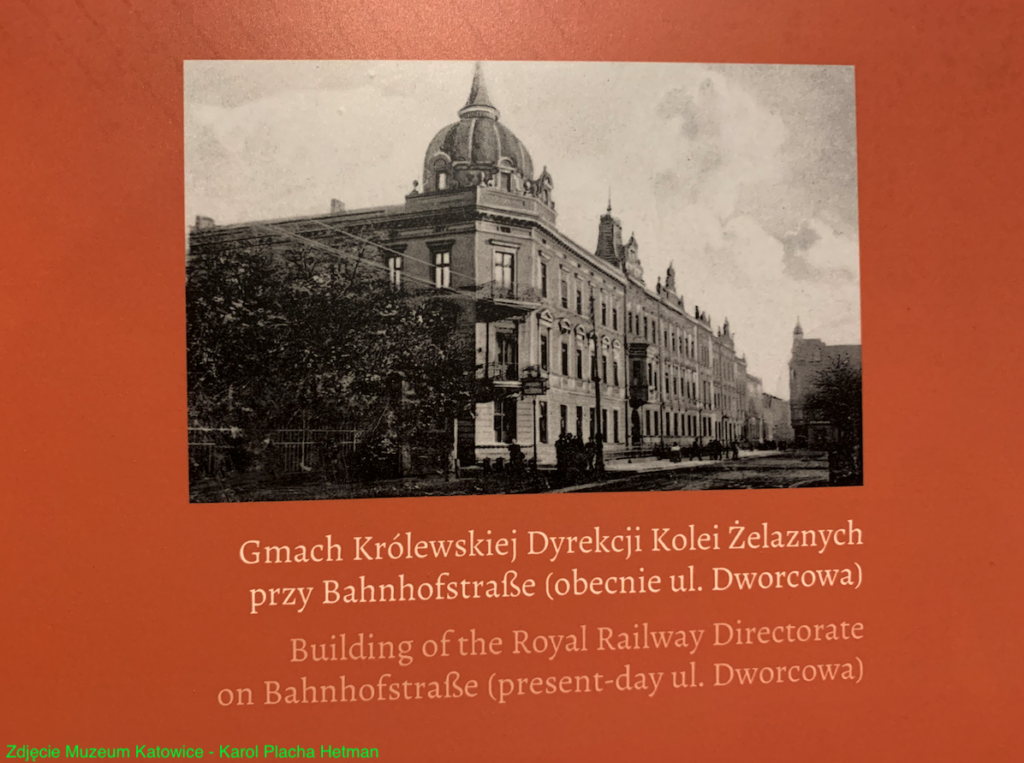
Katowice Railway Station. 1859.
The first station building was built in 1846. It was a small building made of half-timbered brick. The station served its function for a dozen or so years, and then it was a warehouse. It was demolished at the end of the 19th century.
The new station building was built in 1859, it is a large building with palace elements. In reality, a complex of buildings was created, which was built along the railway tracks and Dworcowa Street (Bahnhofstrase). Address Dworcowa Street 2 – 10. The complex was entered into the register of historical monuments on December 18, 1975.
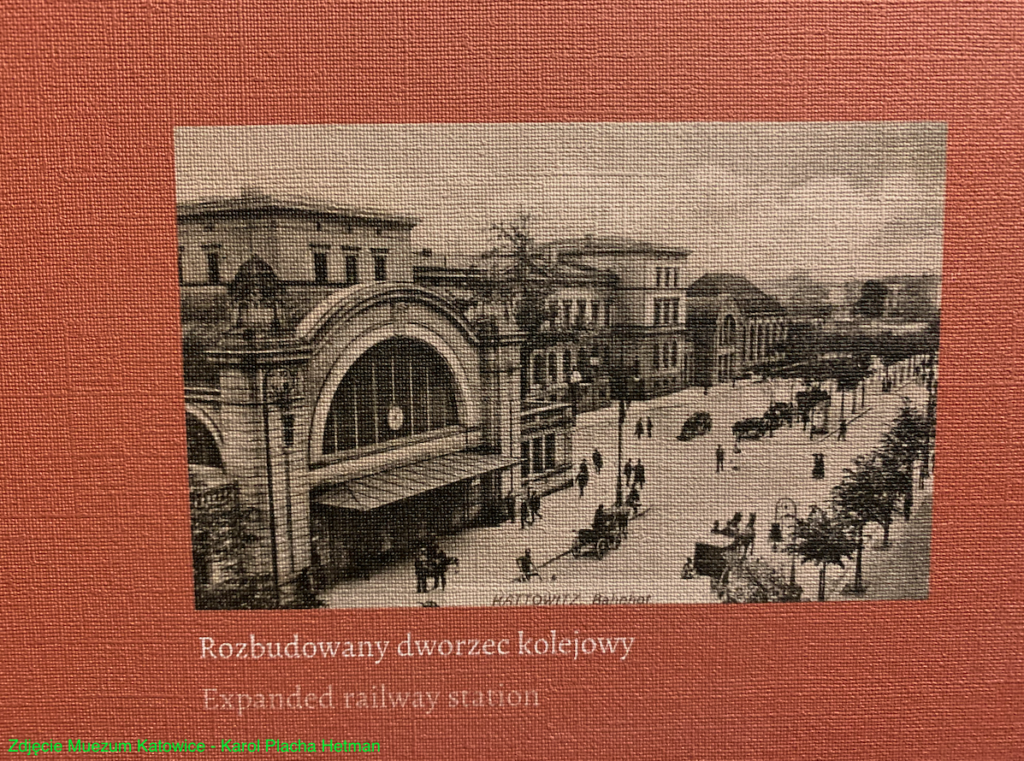
The station complex was built over several decades, along with the development of the station. The first major expansion took place in the period 1906-1908, and then in the 20 years, already in the times of the reborn Republic of Poland. The complex from 1908 included the main hall with ticket offices, restaurants, offices, warehouses, railway service rooms, and railway employee apartments. A second passenger service hall was added. These are the buildings that have rosettes in the front walls. The central part of the complex was built in the modernist style and had one floor and two projections with two floors. In 1925, more floors were added, both to the central element and the projections. In this way, a large office building was built. Among other things, the District Court was located here (in the interwar period). The station complex served its functions until 1972.
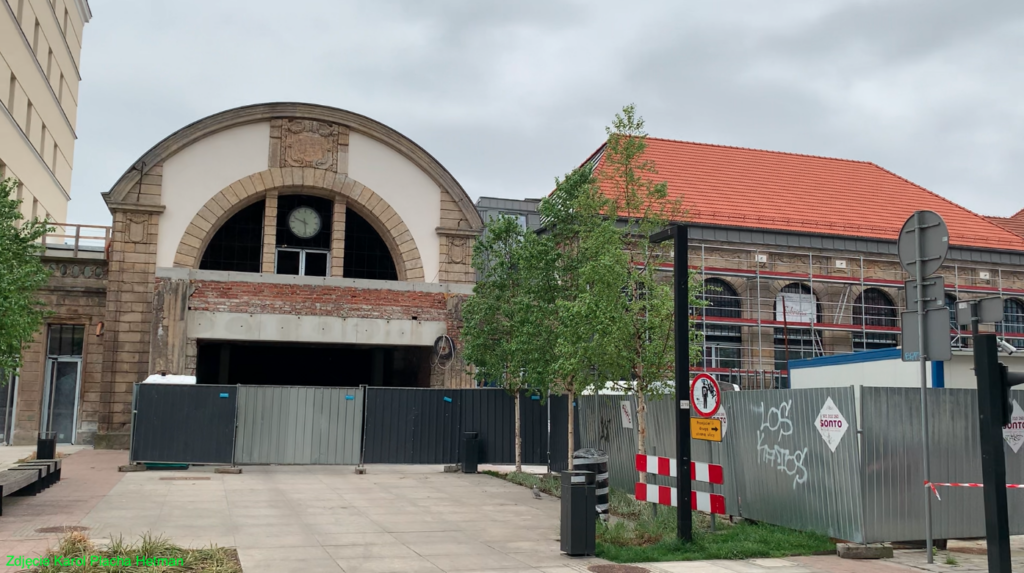
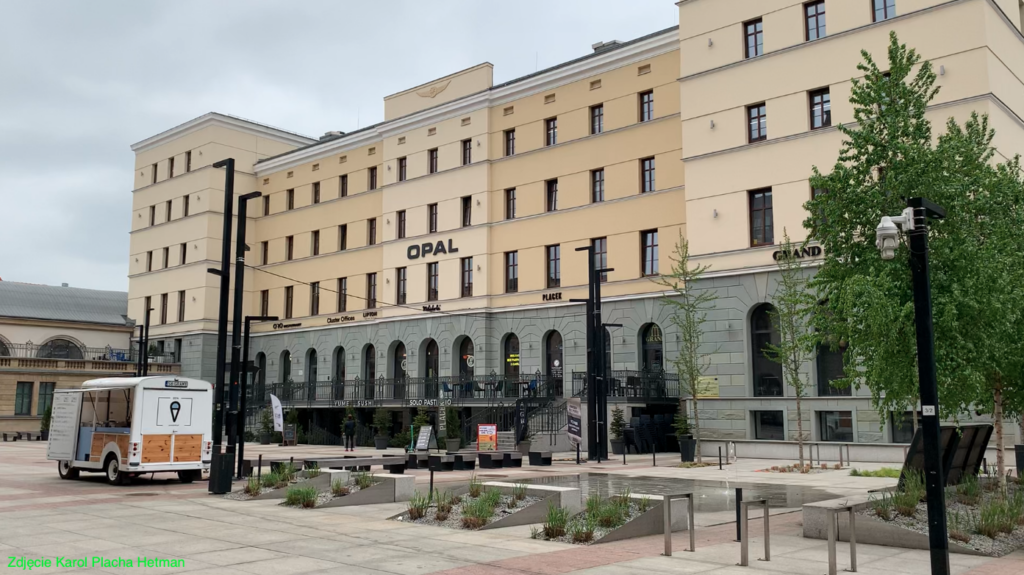
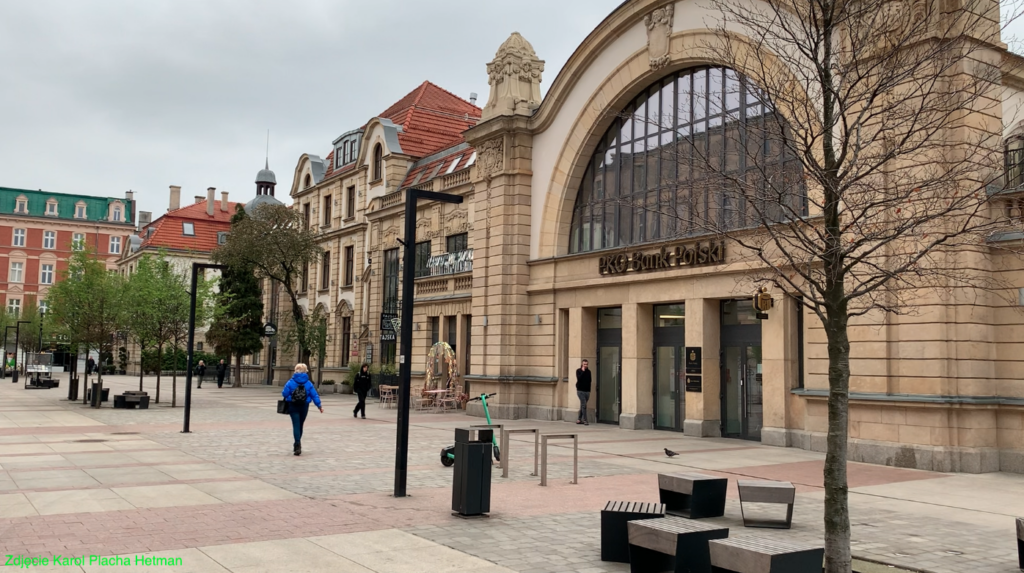
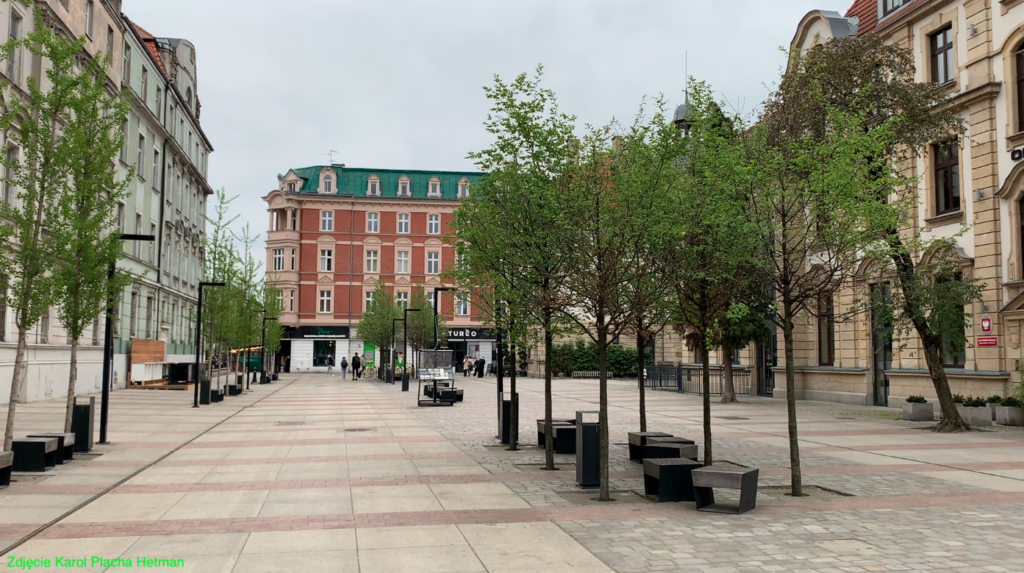
The complex of station buildings required renovation, while maintaining the style in which it was built. In 2007, the complex was sold for PLN 45 million to a private company. However, the company went bankrupt and the complex was auctioned off by a bailiff for the company’s debts in 2015. Another private company became the owner. In 2022, the reconstruction of the old station was completed – Building at Dworcowa Street 8. The building serves as an office. The building’s facade has undergone a major change, and the interior an even greater one. The building is owned by Opal, and the tenant is Cluster.
It is also worth mentioning the tenement house at Mariacka Street 1, which closes the station square from the east (currently Dworcowa Street). The tenement house was built in 1895 and belonged to Paul Frantzioch. During the Second Polish Republic, its owner was Jakub Gałązka. From the beginning, an exclusive café was established on the ground floor of the tenement house. In 1905, the café was named Kaiser Cafe, and from 1920, Astoria, a name that lasted until 1972. The café was a meeting place for wealthy townspeople, journalists and actors. In the evenings, concerts were organized here; bands, pianists and singers. During World War II, the premises were destroyed, but already in the first month after the war it was already accepting guests. The times of the Polish People’s Republic caused the premises to fall into decline and be taken over by the Katowice Gastronomic Plants.
Platforms. 1922-1939
Katowice station played a very important role. From there, trains with “Polish Gold” (hard coal) were dispatched into Poland and for export to Gdynia. Steel products were shipped, and agricultural products were brought in; mainly potatoes and grain. The station level with platforms was located behind the station buildings on the south side. At that time, the station had 7 platforms. The platforms were roofed. A tunnel was built for travelers, along Mielęckiego and Podgórna streets. The tunnel is still in use today. Inside, there are murals on the walls.
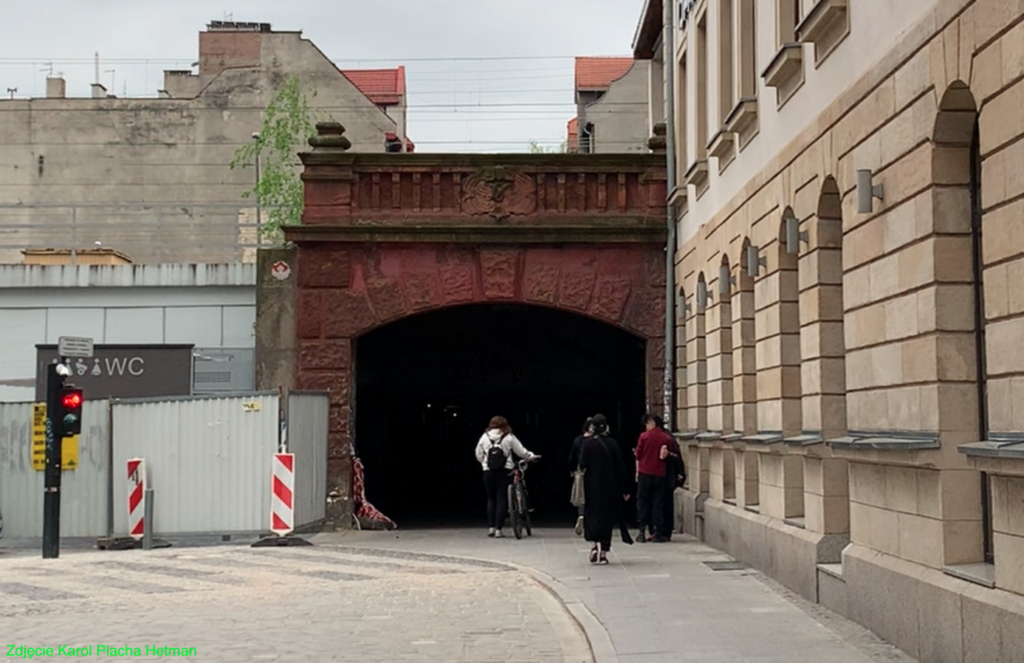
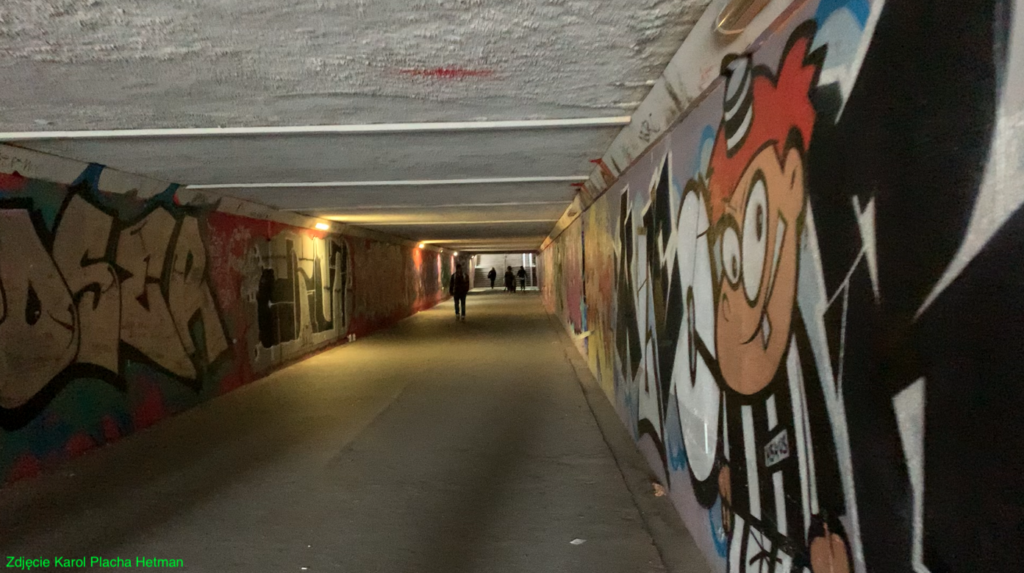
The remnant of the original Katowice station is Platform No. 5, which is currently used sporadically. Platform No. 5 is located approximately 500 m east of Platforms 1-4. The current Platform No. 5 was built in 2011 as a temporary one, during the renovation of Platforms 1-4, and served trains that did not have a place at other platforms. After the general renovation, in 2014, PLK announced that Platform No. 5 would remain and would not be renovated. Currently, 2024, no trains stop at the platform.
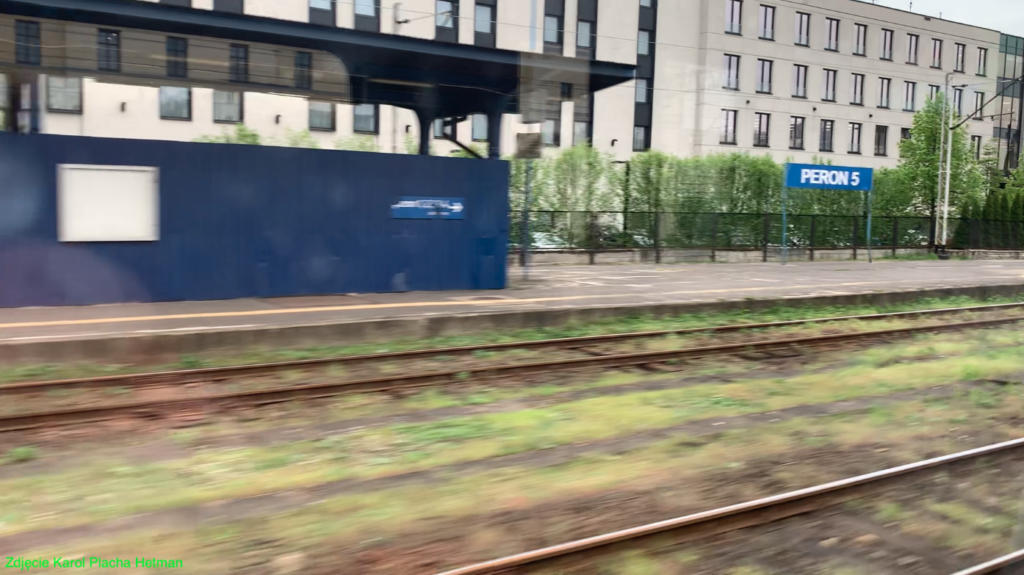
During the German occupation, Katowice station did not suffer. The entire Upper Silesia worked for the Germans for their war needs. In 1945, the retreating Germans blew up the brick water tower, which was rebuilt in 1951. The tower stands to this day (2024).
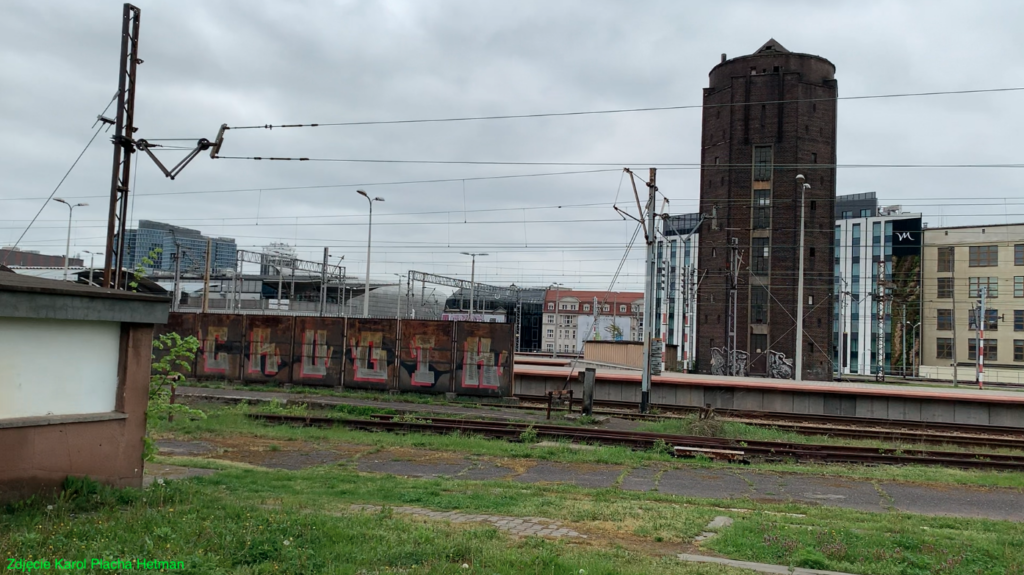
Written by Karol Placha Hetman
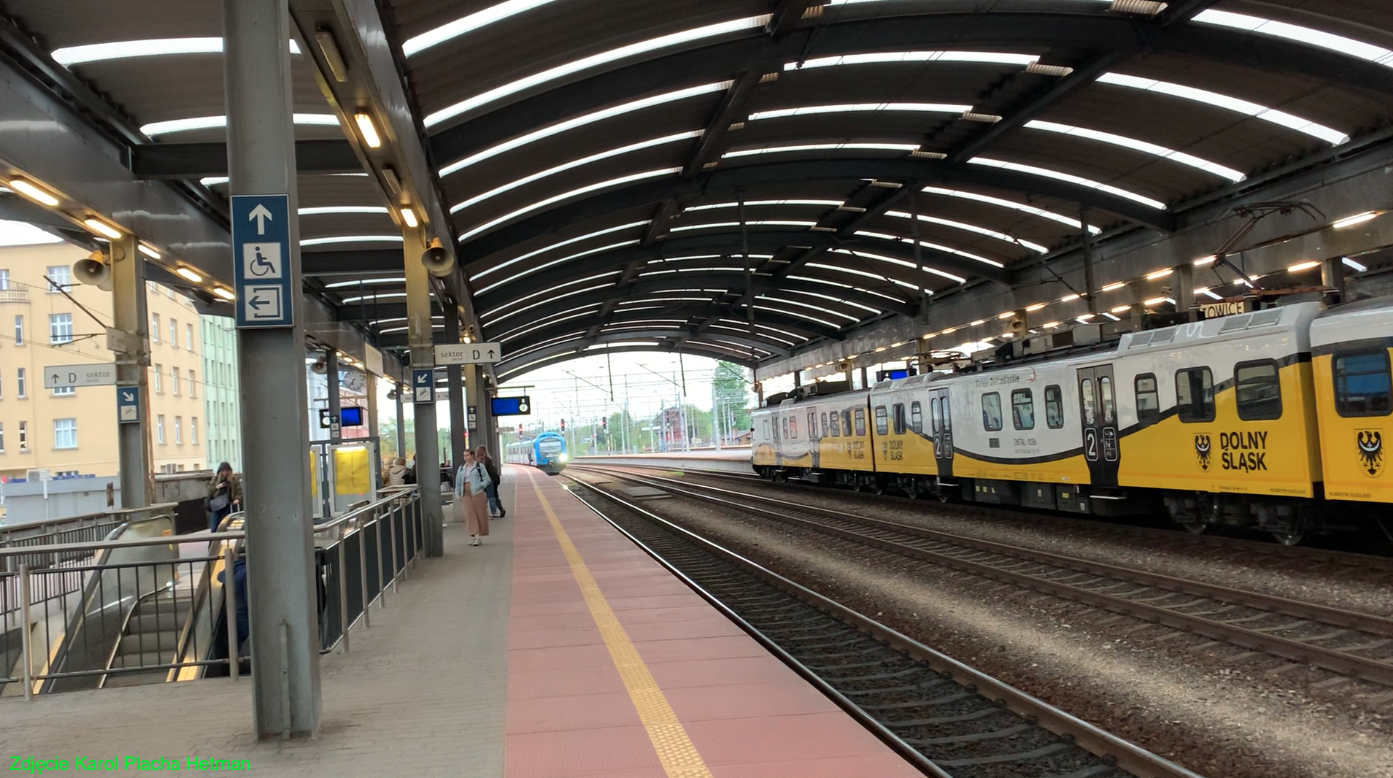
Leave a Reply
You must be logged in to post a comment.